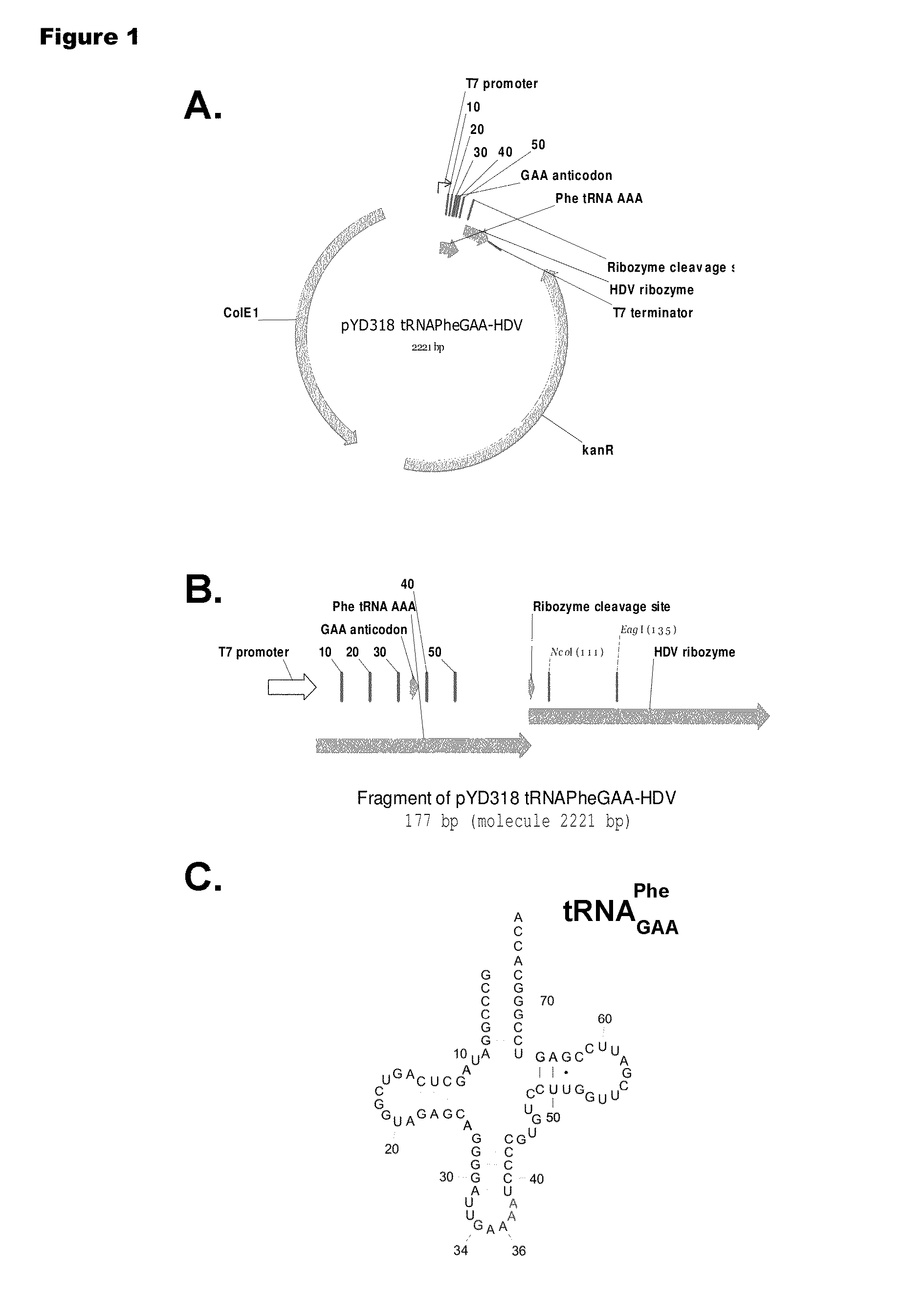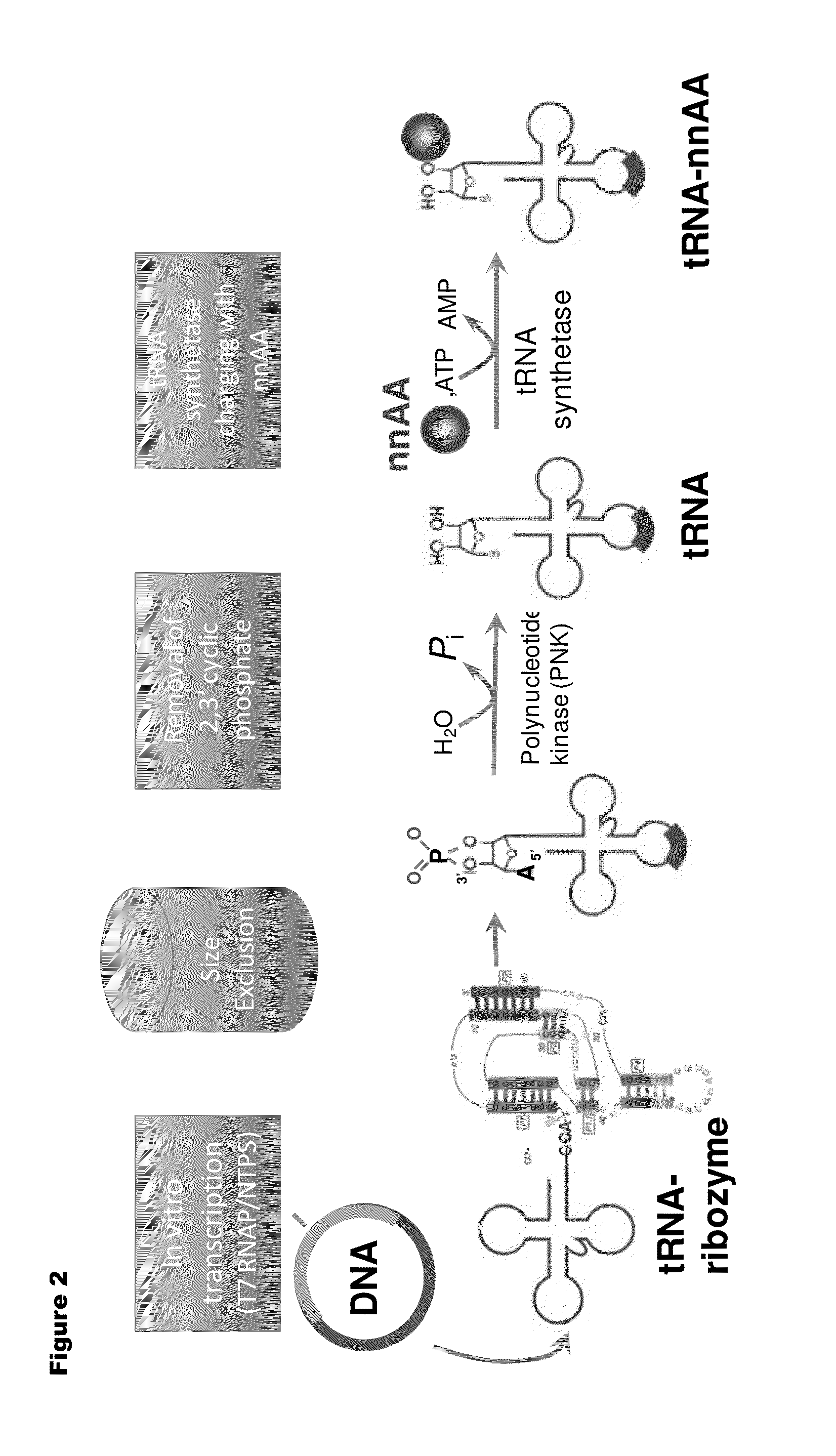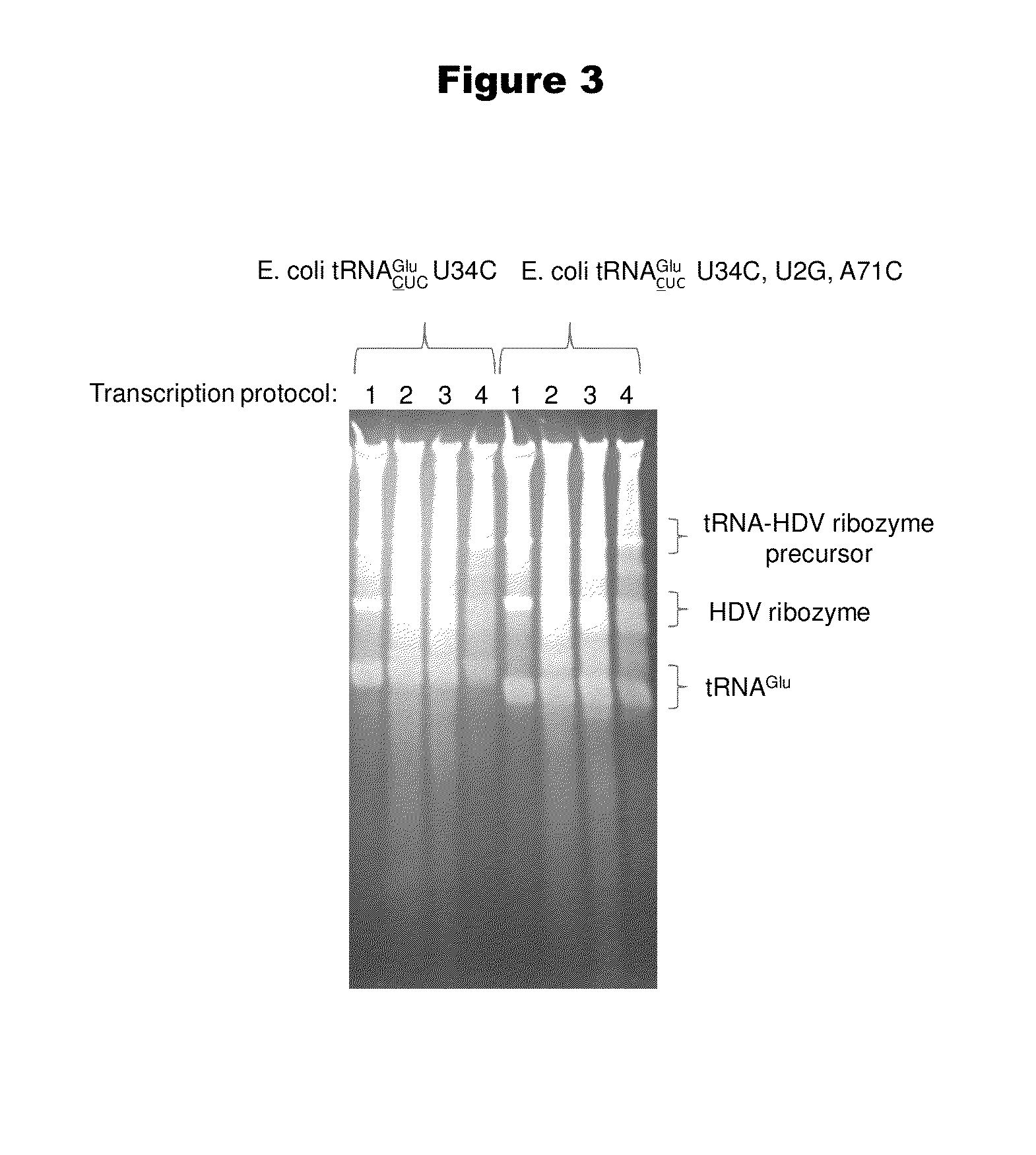Mono charging system for selectively introducing non-native amino acids into proteins using an in vitro protein synthesis system
a charging system and in vitro protein synthesis technology, applied in the field of mono charging system for selectively introducing non-native amino acids into proteins using in vitro protein synthesis system, can solve the problems of limited production of desired proteins, general limited solid-phase peptide synthesis, and even more obvious limitations, so as to inhibit expression and deplete cell lysate
- Summary
- Abstract
- Description
- Claims
- Application Information
AI Technical Summary
Problems solved by technology
Method used
Image
Examples
example 1
General Methods
[0190]Standard methods in molecular biology are described (Maniatis et al. (1982) Molecular Cloning, A Laboratory Manual, Cold Spring Harbor Laboratory Press, Cold Spring Harbor, N.Y.; Sambrook and Russell (2001) Molecular Cloning, 3yd ed., Cold Spring Harbor Laboratory Press, Cold Spring Harbor, N.Y.; Wu (1993) Recombinant DNA, Vol. 217, Academic Press, San Diego, Calif.). Standard methods also appear in Bindereif, Schön, & Westhof (2005) Handbook of RNA Biochemistry, Wiley-VCH, Weinheim, Germany which describes detailed methods for RNA manipulation and analysis.
[0191]Methods for protein purification, chromatography, electrophoresis, centrifugation, and crystallization are described (Coligan et al. (2000) Current Protocols in Protein Science, Vol. 1, John Wiley and Sons, Inc., New York). Methods for cell-free synthesis are described in Spirin & Swartz (2008) Cell-free Protein Synthesis, Wiley-VCH, Weinheim, Germany. Methods for incorporation of non-native amino acids...
example 2
In Vitro Transcription and Isolation of tRNA 2′,3′-Cyclic Phosphate
[0192]Isoaccepting tRNAs aminoacylated with non-native amino acids can be produced from a designed tRNA-HDV ribozyme template DNA, illustrated by example in FIG. 1, by in vitro transcription, followed by purification by size exclusion chromatography (SEC), enzymatic removal of the 2′,3′-cyclic phosphate, and charging of the tRNA with non-native amino acids (nnAAs) using engineered tRNA synthetase enzymes, as illustrated in FIG. 2. In order to optimize the transcription yield, four different in vitro transcription protocols were tested for the tRNA transcripts illustrated in FIG. 3 and FIG. 4. All four different in vitro transcription protocols gave similar tRNA yields. Transcription optimization was generally carried out for 2-3 h at 37° C. in 50 μL reactions. Reaction conditions were as follows: (1) 40 mM HEPES (pH 7.9), 10 mM DTT, 10 mM MgCl2, 2.5 mM spermidine, 4 U / ml pyrophosphatase, 0.4 U / ml supeRNAse-in (Ambion...
example 3
Dephosphorylation of tRNA 2′,3′-Cyclic Phosphate to Release Active tRNA
[0197]T4 polynucleotide kinase (PNK), required for the removal of the 2′-3′ cyclic phosphate from tRNA cleaved by HDV ribozyme (cf. FIGS. 2 & 5), was produced as follows, The PNK gene with an N-terminal 6-Histidine tag (SEQ ID NO:13) was gene synthesized (DNA 2.0, Menlo Park., CA), and cloned into plasmid pYD317. The plasmid T4PNK_pYD317 was used to transform BL21(DE3) cells. These cells were grown in a Braun 10 L fermenter on autoinduction media (Studies F. W. (2005) Protein Expr. Purif. 41:207-234) for 18 hours to a final OD of 21. Cells were harvested by centrifugation and to obtain 240 g of cell pellet. 40 g of cell pellet were resuspended in 500 ml Buffer A (50 mM Tris (pH 7.8), 300 mM KCl, 10 mM imidazole), lysed by homogenization, was clarified by centrifugation, and loaded onto a 35 mL Ni-IMAC column. The column was washed with 5 column volumes of Buffer A. Buffer A plus 0.5 mM BME, 300 mM imidazole, 0.1 ...
PUM
| Property | Measurement | Unit |
|---|---|---|
| temperature | aaaaa | aaaaa |
| temperature | aaaaa | aaaaa |
| temperature | aaaaa | aaaaa |
Abstract
Description
Claims
Application Information
 Login to View More
Login to View More - R&D
- Intellectual Property
- Life Sciences
- Materials
- Tech Scout
- Unparalleled Data Quality
- Higher Quality Content
- 60% Fewer Hallucinations
Browse by: Latest US Patents, China's latest patents, Technical Efficacy Thesaurus, Application Domain, Technology Topic, Popular Technical Reports.
© 2025 PatSnap. All rights reserved.Legal|Privacy policy|Modern Slavery Act Transparency Statement|Sitemap|About US| Contact US: help@patsnap.com



